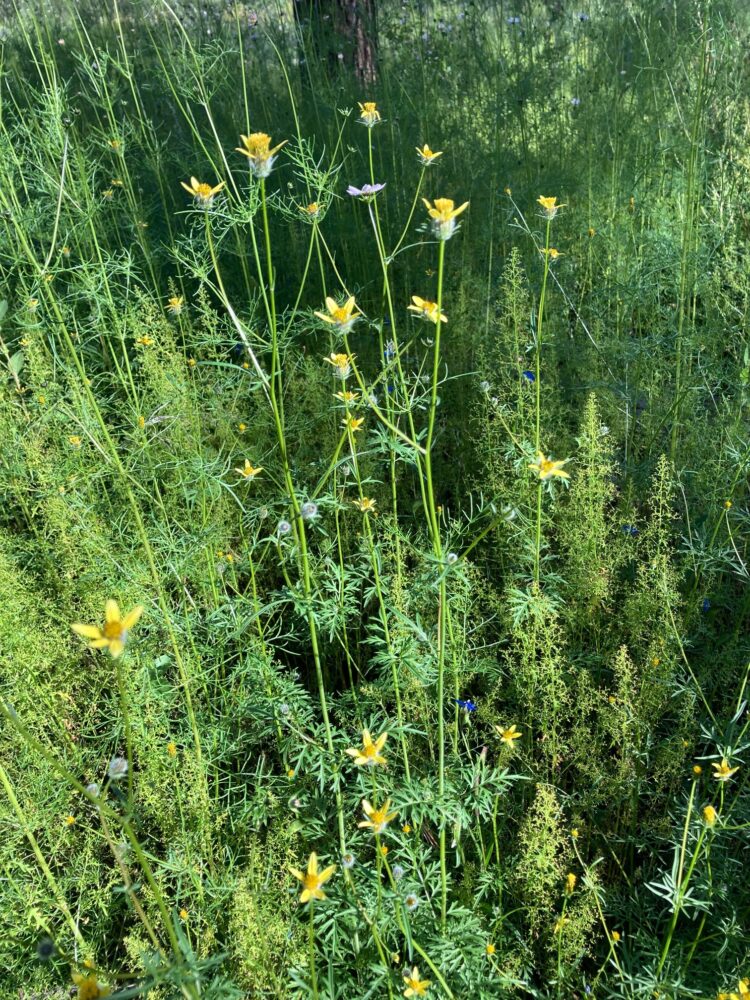by Chick Keller
The large amount of rainfall this year has brought out the annual wildflowers. Some, like summer cypress (Kockia scoria) a noxious weed, have covered large areas of disturbed land. Others like fetid goosefoot (Dysphania graveolens), which turn a lovely magenta in early Fall, are covering forest floors under ponderosa. But perhaps the most spectacular bloom can be found in lower Rendija Canyon (park at the Pajarito Trailhead near the shooting range and hike down into Rendija Canyon and thence up canyon).
Not an annual but beautiful blue dayflower (Commelina dianthifolia) can be seen where the Pajarito Trail intersects the trail up Rendija Canyon. From there one finds a veritable forest of annuals growing to unheard of heights (5 feet or more). The two most prominent are blue cosmos (Cosmos parviflora ) and yellow beggerticks (Bidens tenuisecta), both of these produce seeds that catch onto clothing or animal fur for easy dispersion. While in seed these are pests, in flower they are quite beautiful and in Rendija Canyon there are thousands in large stands. It’s as if the seeds of these species have lain dormant for years waiting for enough water to germinate, and then all of them grow at once! This same activity is happening across our county for a variety of other annual species, but in Rendija Canyon the bloom is most spectacular. The abundant moisture has caused many other wildflowers to grow. In that canyon I counted some 56 species some of which haven’t been seen there before. One is the small-flowered Narrow-leafed four o’clock (Mirabilis linearis) with its copious small magenta blooms. Enjoy.
yellow beggerticks (Bidens tenuisecta)

